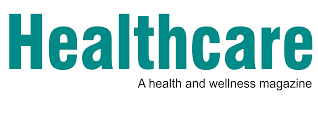Achieving better health outcomes for communities requires more than treating illnesses as they occur. A proactive approach, one that focuses on preventative care and the broader management of population health, is crucial in building sustainable healthcare systems. This practice, known as population health management, drives health equity and fosters long-term efficiencies in healthcare delivery.
For healthcare providers, adopting proactive strategies enables earlier interventions, improves overall population well-being, and can lead to substantial cost savings. This blog will explore proactive population health strategies, their benefits, and how they can help healthcare systems thrive in the future.
What Is Population Health Management?
Population health management (PHM) refers to the organized management of health outcomes for a specific group of individuals. This often involves tracking healthcare data, identifying and mitigating potential risks, and implementing preventative measures. The overarching purpose is to improve health outcomes for all, while reducing disparities across social, economic, and demographic factors.
This approach departs from traditional reactive care by emphasizing prevention, early intervention, and long-term care coordination. For healthcare providers, it means shifting from treating isolated symptoms to addressing root causes within a community to foster holistic wellness.
Why Proactive Strategies Are Critical in Modern Healthcare
Current healthcare models face challenges such as rising costs, chronic illness prevalence, and concerns about disparities in access to care. Proactive population health strategies offer a solution by focusing on prevention and proper resource allocation. Here are three critical reasons why proactive PHM is essential:
Early Identification of Health Risks
Proactive strategies leverage advanced technologies like data analytics and artificial intelligence to identify at-risk populations. By analyzing patterns in patient data, healthcare providers can predict potential health challenges before they escalate.
For example, someone with consistently high blood pressure may be flagged as at risk for cardiovascular disease. Targeted interventions, such as personalized lifestyle management, can then prevent costly and life-threatening events.
Reduced Long-Term Costs
Chronic conditions like diabetes, heart disease, and obesity significantly drive up healthcare costs. Preventing, managing, or intervening early in these conditions can save billions annually. For instance, Centers for Disease Control and Prevention (CDC) studies show that every $1 spent on workplace wellness programs delivers a $3 return in the form of lower healthcare costs and higher productivity.
Investing in proactive care also reduces unnecessary hospitalizations and emergency room visits, lessening strain on overloaded infrastructure.
Improved Patient Outcomes and Satisfaction
When patients engage in programs that address their unique risks and health goals, they’re more likely to achieve positive outcomes. Tailored education programs, timely health screenings, and consistent follow-ups contribute to better patient satisfaction while fostering trust between providers and their communities.
Key Proactive Population Health Strategies
Adopting proactive population health management involves structured initiatives that empower both healthcare providers and patients. Below are key strategies that institutions can implement to deliver measurable results:
Strengthening Preventative Services
Preventative care, such as vaccines, screenings, and routine check-ups, is the backbone of population health management. By ensuring access to these services, healthcare providers can prevent diseases or detect them at earlier, more manageable stages.
For example, regular mammograms significantly reduce breast cancer fatalities, while diabetes screenings can help patients manage blood sugar early. Providers can promote compliance by incentivizing routine check-ups through insurance programs and reminders.
Utilizing Data Analytics for Insights
Properly leveraging patient data helps healthcare providers create effective, targeted interventions. Advanced analytics can merge data from electronic health records, wearable devices, and social determinants of health metrics to identify risks and track overall health.
Machine learning models, for instance, can predict patients’ likelihood of readmission after a hospital stay, enabling providers to deploy preventive resources like home health services or follow-up calls.
Patient Engagement Programs
Engaged patients experience better health outcomes. Proactive strategies must focus on educating and empowering individuals to take charge of their own health. Personalized health plans, smartphone apps, and interactive wellness tools encourage individuals to remain active participants in their care.
For example, gamified health apps that track exercise or stress levels incentivize users to maintain healthier habits. Providers could also initiate community wellness campaigns to encourage population-wide behavioral shifts.
Addressing Social Determinants of Health (SDOH)
Factors such as economic stability, education, neighborhood environments, and access to affordable food heavily impact health outcomes. A proactive approach requires addressing these underlying contributors as part of PHM efforts.
For instance, partnerships with local organizations to arrange food pantries, housing assistance, or vocational training for underserved communities can yield profound improvements in public health metrics over time.
Building Robust Care Coordination Networks
Collaboration among providers, payers, and caregivers ensures seamless care for patients. Integrated care networks, supported by centralized data systems, help track patients’ progress across various stages of treatment. This not only prevents redundancy in tests but also enables continuity of care.
For example, a patient recovering from surgery may receive coordinated support from physical therapists, dietitians, and mental health specialists overseen by a networked provider team.
Benefits for Healthcare Providers and Communities
Proactive population health strategies benefit both the healthcare system and the individuals it serves. Key advantages include:
- Better Resource Allocation: Providers can focus efforts and funds where they will have the most impact, avoiding unnecessary expenditures.
- Health Equity: Strategies targeting underserved populations can help close gaps in healthcare disparities, improving access for all.
- Sustainable Growth: Forward-thinking providers adopting PHM will be better positioned as healthcare shifts towards value-based care models.
Unlocking the Future of Proactive Healthcare
The future of healthcare depends on innovations that treat populations comprehensively and prevent illnesses before they occur. A strategic focus on population health management allows providers to elevate care standards, improve efficiency, and minimize costs simultaneously.
Healthcare providers ready to implement such proactive strategies should invest first in foundational tools such as data analytics, educational outreach, and preventive care programs. Collaboration across industries and organizations will also be critical in addressing complex health disparities.
By acting today, organizations can build healthier and more equitable systems that will shape the future of healthcare for generations to come.

